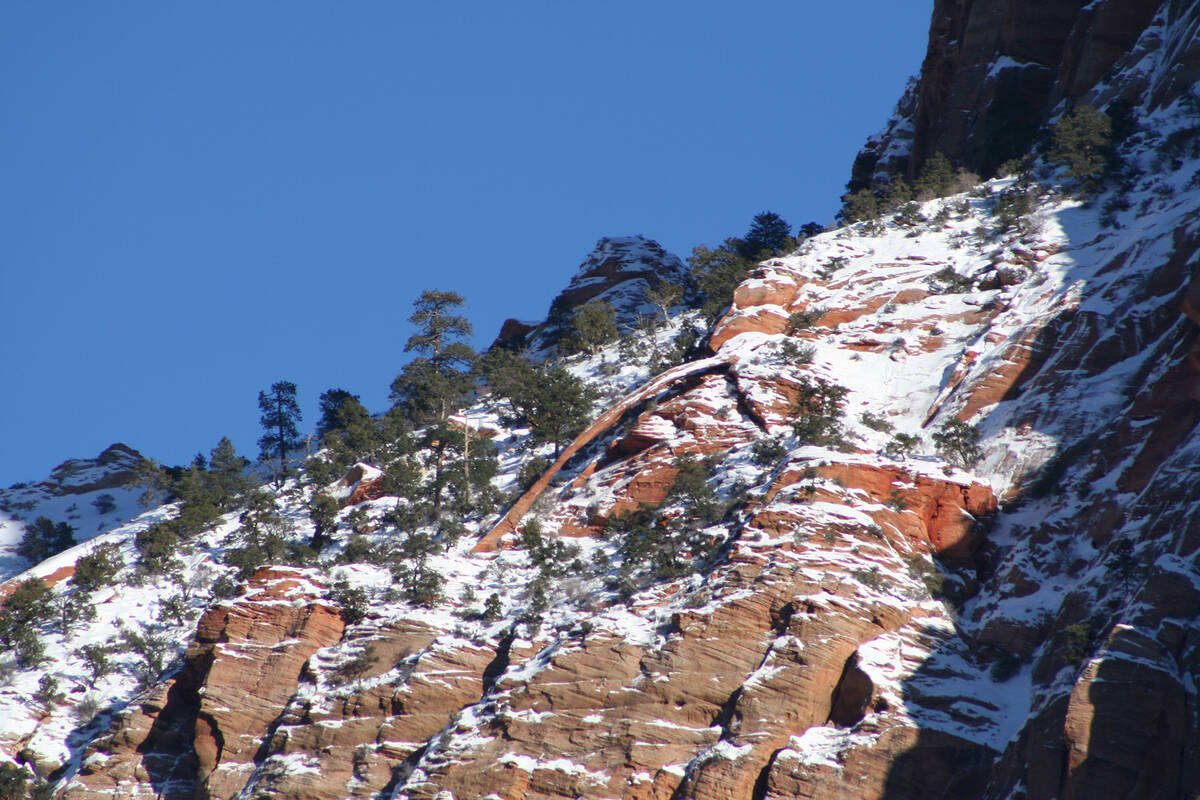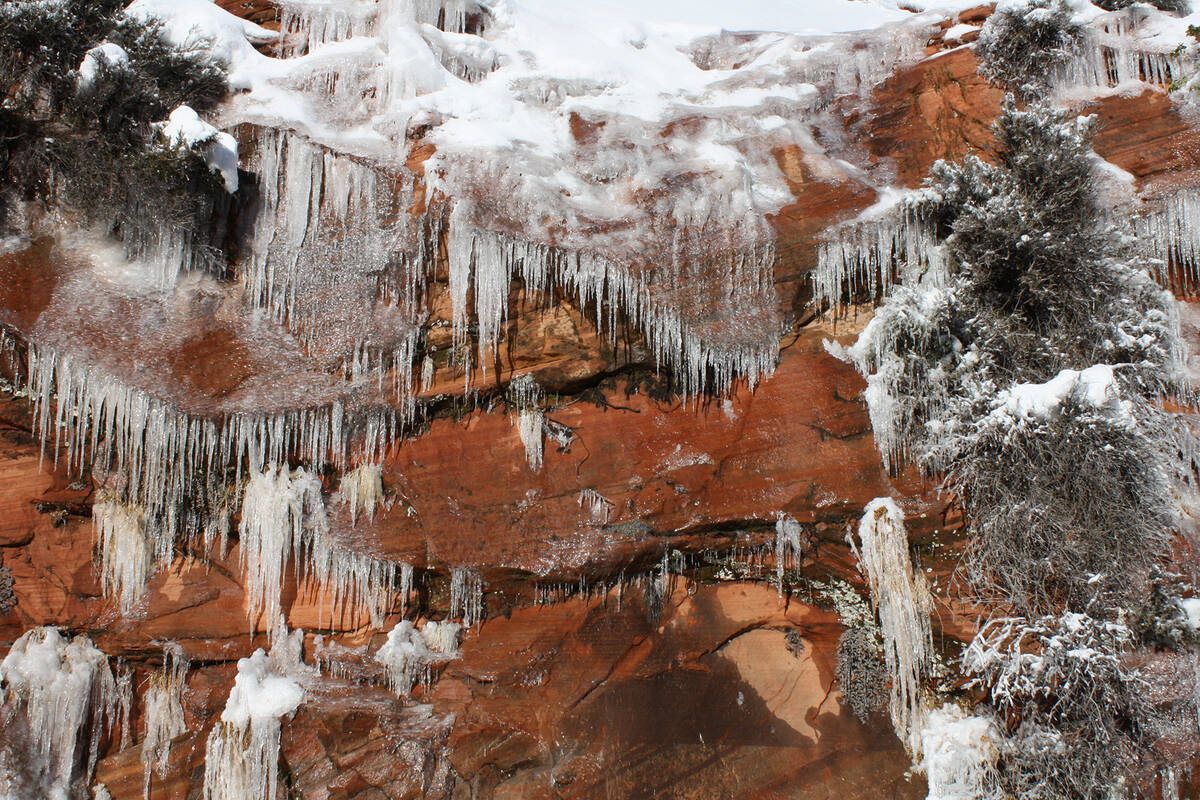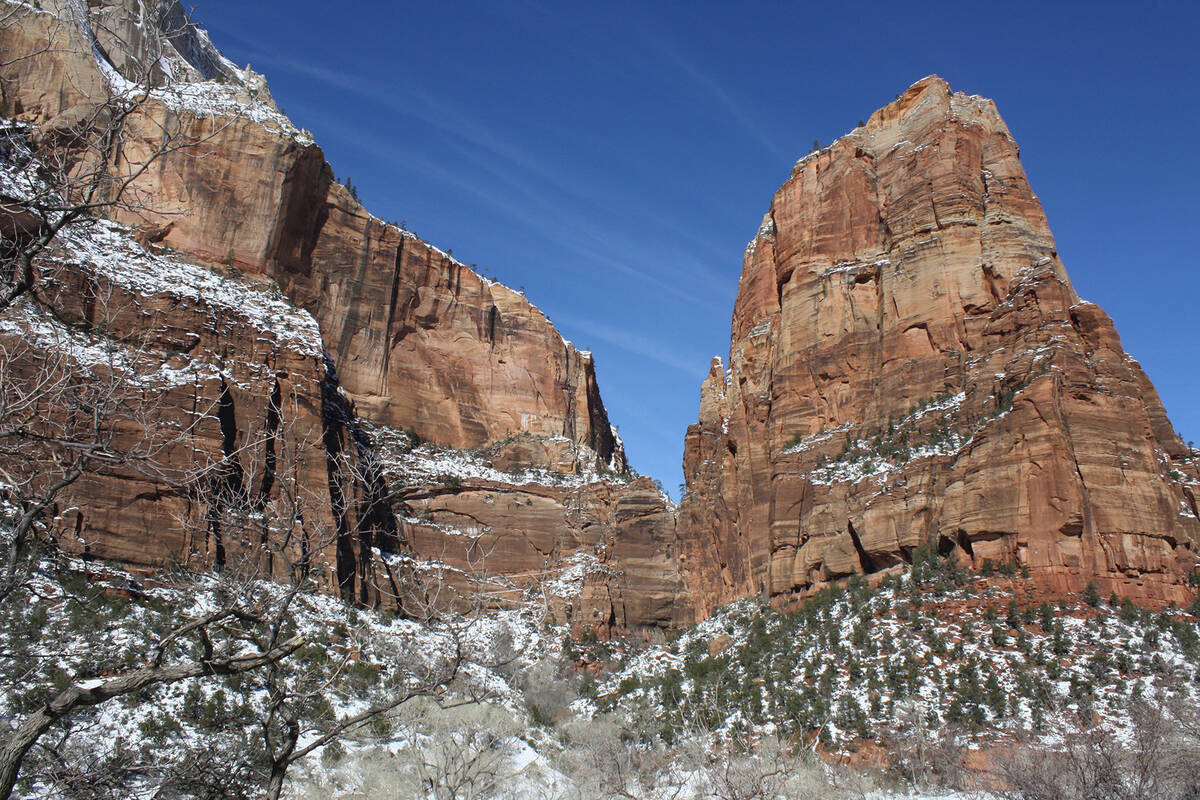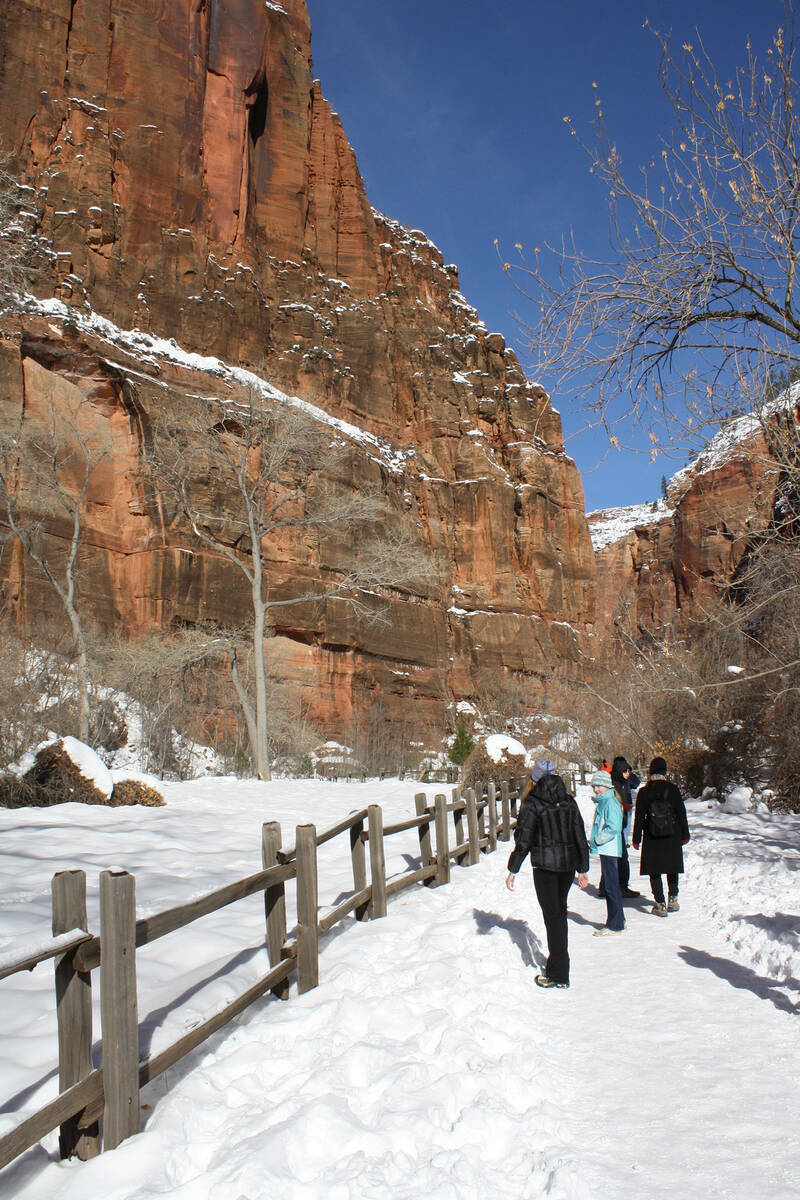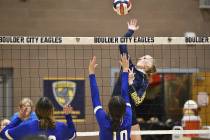Snow-kissed landscapes make Zion winter wonderland
Zion National Park in Southern Utah is one of our favorite landscapes any time of year, but in winter its stark mountains, stripped of summer foliage, will be all the more breathtaking, especially if Mother Nature kisses her creation with snow. Yet this time of year is also the least crowded with other visitors. It’s about three hours away and, assuming an early start, even suitable for a day trip.
In winter expect a wide range of weather conditions and that temperatures can vary by 30-40 degrees on a given day. In January daily high temperatures in the main area of the park are usually in the mid-50s with lows around 30 degrees. The average January precipitation is about 2 inches, yet the park can experience storms dumping more than a foot of snow.
While some trails might be closed due to conditions, you can rely on others remaining open all winter. A special favorite is the Pa’rus Trail, and leaves near the visitor center. This travels about 3.5 miles round trip to the start of Zion Canyon Drive but you can just stroll a short way for a nice outing. The trail flanks the North Fork of the Virgin River and offers excellent views to some of the park’s finest monoliths. Be sure to look up to get a good look at Crawford Arch located just to the left side of towering 6,814-foot Bridge Mountain on the south side of the trail. The arch spans about 150 feet but it is only about 3 to 4 feet wide.
The trailhead is at 3,915 feet in elevation, so deer are often seen, and a few hardy birds winter here such as the red-tailed hawk, American kestrel and wild turkey, which all breed here. If you are very fortunate, you might even see the reintroduced California condor. Bring binoculars on this outing for wildlife watching.
Because the low winter sun does not often reach deep into Zion Canyon proper, most of the trails can be icy, but that problem is easily addressed with a pair of traction devices that quickly slip on and off your boots. Popular brands include Yaktrax, STABILicers and Kahtools.
Getting out on foot even a little way can be well worth a modest investment. The paved Riverside Walk is often beautiful with frozen waterfalls, on the cliff faces, melting in the midmorning sun.
For a more open hiking experience, you might want to head away from the main area of the park to the southwest lowland area. Here, Huber Wash offers a high level of solitude with spectacular and rarely seen views of the park’s 7,276 foot Mt. Kinesava. Starting at about 3,760 feet in elevation, it’s unlikely to be blocked by snow, though it can be a muddy trek if there has been a lot of recent rain, and is best avoided at those times. There are a few rocky areas and some water might be found, but overall it’s a moderately easy 4.6 miles round trip for most ages and abilities.
The parking pullout for this hike is on the north side of Utah Highway 9, about 6 miles before Zion’s main entrance. Look for a small transformer station and power lines and you’re in the right spot.
From the parking pullout, which serves as the trailhead, pass through the gate leaving it open or closed, whichever way you found it. Walk north on a gravel road and then, taking one of the many spur trails, drop down into the wash and head right, away from the highway. The trail enters the park 0.4 miles from where you parked.
The sandy wash will show you plenty of evidence of area wildlife. Look for tracks and scat from gray fox, bobcat, mule deer and mountain lion. If you look closely, you might also find some small pieces of petrified wood that have washed downstream. Feel free to admire it but be sure to leave it in place so others can enjoy it. Furthermore, it’s illegal to take it.
This hike ends in a box canyon where you will be able to see logs of petrified wood embedded in the canyon wall. Unfortunately, you will also see a few spots where decades ago someone removed some of this precious wood. It’s still a pretty canyon and has weeping springs and hanging gardens of water-loving plants which, this time of year, turn into a wonderful ice display.
Packing for a winter trip to Zion can be a little challenging as you’ll need to be prepared for changing conditions of clear weather, rain or snow. Dress in layers, which you can remove and stash in your daypack for later use if needed. Remember that sundown comes early in winter, especially in canyons. Besides your standard emergency equipment every member of your party should carry a flashlight or headlamp in case darkness overtakes you.
For more information about visiting Zion National Park, contact www.nps.gov/zion.
Many of Deborah Wall’s columns have been compiled into books about hiking in the Southwest. She is also the author of “Great Hikes, a Cerca Country Guide” and a co-author of the book “Access For All, Seeing the Southwest With Limited Mobility.” Wall can be reached at Deborabus@aol.com.
Directions: Take Interstate 11 and merge onto Interstate 515 north. Continue to Interstate 15 and head north for about 120 miles. Take exit 16 to merge onto Utah State Route 9 east/West State Street heading toward Hurricane. Continue along Utah State Route 9 about 30 miles to the park.

